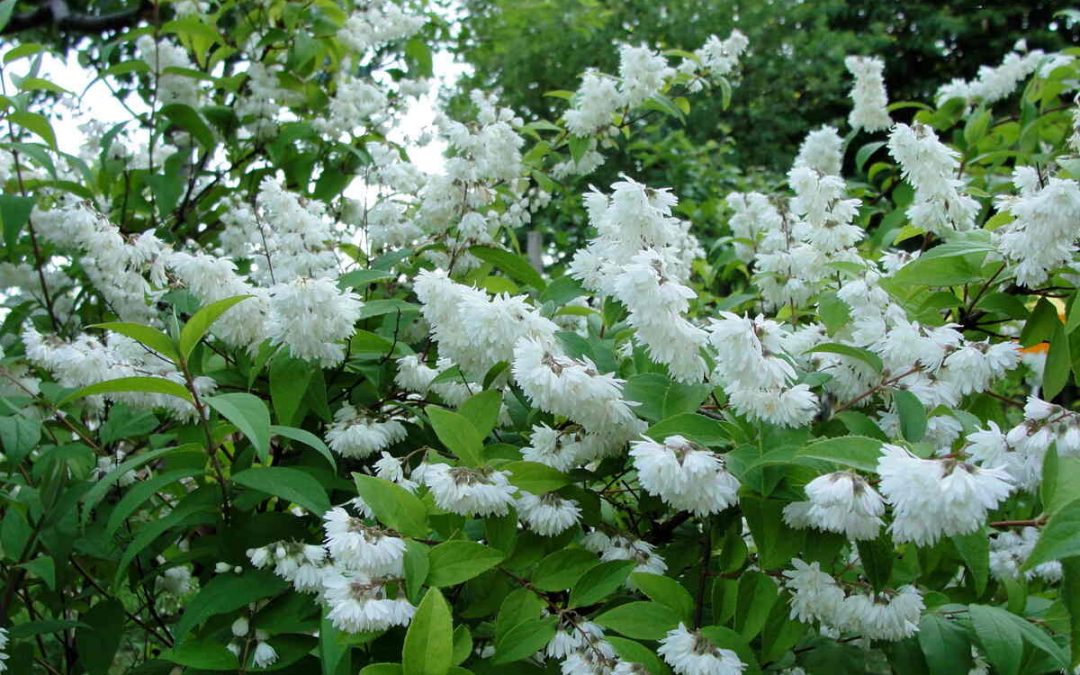If you’ve ever tried to maintain a garden in the Mount Rushmore State, you know that South Dakota’s erratic weather can be both a blessing and a curse. While the hot and sunny summers encourage lush growth, the harsh winter blizzards and unpredictable storms can make it challenging to keep your yard thriving. The solution? Incorporating native plants. To help you get started, we’ve put together a list of the best native plants for South Dakota’s unique landscape.
From the sweeping prairies of the Great Plains to the breathtaking beauty of the Black Hills, South Dakota is home to an impressive array of native plants that have adapted to the state’s extreme weather patterns. Adding these species to your lawn has many benefits, including:
- Low maintenance: Native plants require less watering, fertilizing, and overall care, as they are already adapted to our soil and climate conditions.
- Increased biodiversity: They’re great for promoting a diverse ecosystem in your yard, supporting pollinators, hummingbirds, and other wildlife that rely on these species for food and shelter.
- Drought tolerance: They are generally more drought-tolerant than non-native species, so you won’t need to irrigate as much during South Dakota’s dry months.
- Pest resistance: They are more resistant to local pests and diseases, which means you won’t have to rely as heavily on pesticides or other chemical treatments to keep your garden healthy and thriving.
In this article, we’ll cover:
- Native Plants for Your South Dakota Yard
- How to Choose Native Plants for Your South Dakota Landscape
- FAQ About Native South Dakota Plants
- Where to Find Native Plants in South Dakota
8 Native Plants for Your South Dakota Yard
1. Boxelder Maple (Acer negundo L.)
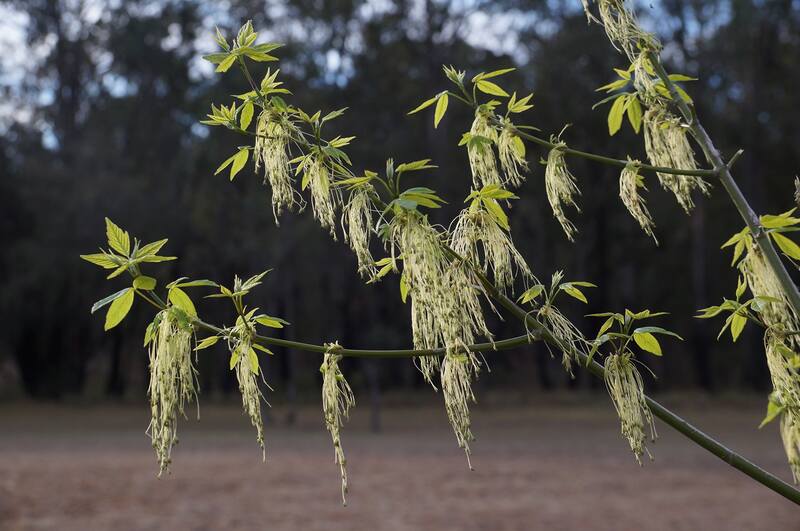
Photo Credit: Tatters / Flickr / CC BY 2.0
The boxelder is a fast-growing deciduous tree particularly suited for the western two-thirds of South Dakota. You’ll often find it thriving along the stream banks, and even tucked away in canyon bottoms throughout the Great Plains. It’s a real champ when it comes to adapting to various soil types, from the sandy soils near the Missouri River to the clay-rich earth found in the Black Hills. And once it’s established, it can even handle the state’s frequent droughts.
One of the best things about the boxelder is the generous shade it provides, making it a top choice for creating a cool and comfy spot in your yard to relax during South Dakota’s scorching summer days. But keep in mind that it can soar up to 80 feet tall and spread just as wide, so you need to make sure you give it plenty of room to grow.
Plant type: Tree
USDA Hardiness zones: 2 to 9
Sun: Full sun to partial shade
Soil: Just about any well-drained soil
Duration: Perennial
Foliage: Deciduous
Fragrance: Mild
Bloom time: March – April
Water needs: Medium, drought tolerant
Mature height: 30 to 80 feet
Potential hazards: They are toxic to horses and some people get an allergic reaction from them.
Maintenance needs: Be careful not to overwater. It thrives best when the soil’s moisture varies.
2. Common Yarrow (Achillea millefolium)
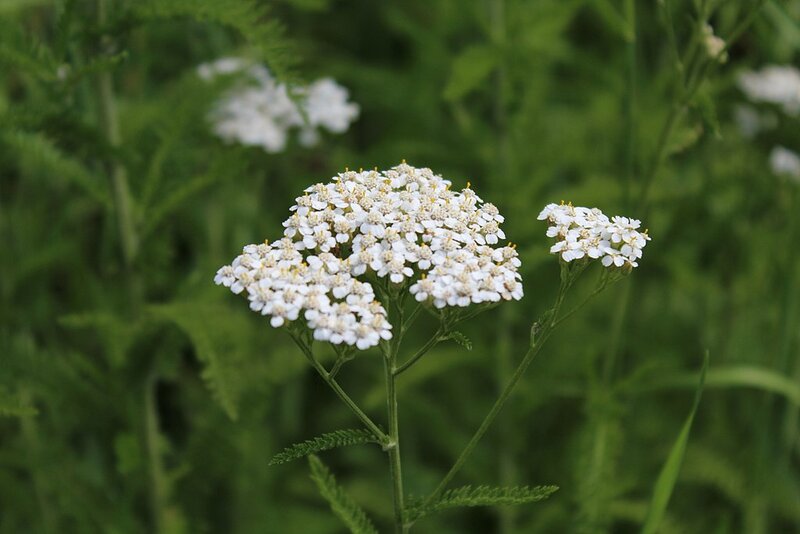
Photo Credit: Jitaeri / Wikimedia Commons / CC BY-SA 4.0
Common yarrow is easily recognizable by its feathery, fern-like leaves and clusters of tiny, white to pale pink flowers that form a flat-topped bloom. It can grow in most of South Dakota’s yards. However, you’ll find it naturally growing around the northern and southern edges of the Black Hills, like in Custer, Fall River, and Pennington County.
Growing up to 3 feet tall, the common yarrow has a spreading growth habit, making it an excellent choice for ground cover or as a border plant. It prefers well-drained sandy and loamy soils, but can tolerate other soil types, such as clay.
It’s a sun-lover, thriving in full sun exposure, but it’s also pretty adaptable and can handle a bit of light shade. Now, it might require some extra attention to keep it from taking over other plants in your garden.
Plant type: Herb
USDA Hardiness zones: 4 to 8
Sun: Full to partial sun
Soil: Well drained soil, Prefers sandy loams
Duration: Perennial
Foliage: Evergreen
Fragrance: Spicey
Bloom time: April – September
Water needs: Medium, Drought tolerant
Mature height: 3 feet
Potential hazards: Poisonous to humans, pets, and horses when ingested in large quantities.
Maintenance needs: Regularly prune and deadhead.
3. Canadian Anemone (Anemone canadensis)
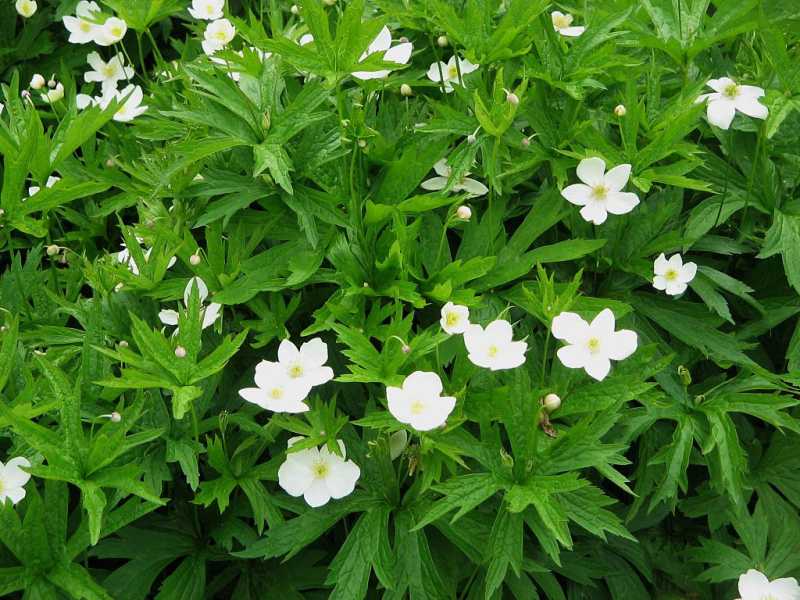
Photo Credit: Meneerke bloem / Wikimedia Commons / CC BY-SA 3.0
While its common name is Canadian anemone, this species is actually a fantastic native plant for South Dakota gardens, too. It grows well in the sandy and loamy soils of both the northern and southern regions of the state.
Now, it prefers moderately moist soils, so it’s perfect for planting near a pond. If you don’t have a water feature, that’s okay; it can also tolerate drier conditions, which is great news if you live somewhere with low precipitation levels, like Sioux Falls.
When it comes to planting Canadian anemone, it’s a good idea to give it some space, as it tends to spread and form colonies. This makes it an excellent ground cover option, especially in shady areas where other plants might struggle. Just remember to keep an eye on it to ensure it doesn’t become too invasive.
Plant type: Herb
USDA Hardiness zones: 3 to 8
Sun: Partial shade to full shade
Soil: Moderately moist, sandy soil
Duration: Perennial
Bloom time: April to August
Water needs: Medium; water weekly or when topsoil is completely dry
Mature height: Up to about 30 inches tall
Potential hazards: Toxic to humans and pets if eaten in large quantities
Maintenance: Low; keep the soil moist
4. Narrowleaf Purple Coneflower (Echinacea angustifolia)
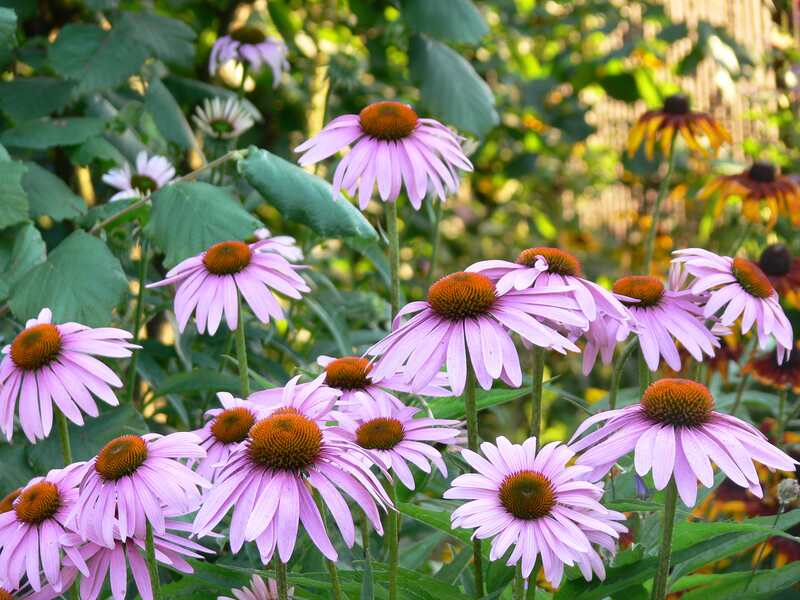
Photo Credit: Dy-e / Wikimedia Commons / CC BY-SA 3.0
Narrowleaf purple coneflower is a true gem among South Dakota’s native plants. This perennial herb, with its striking purple flowers and distinctive central cone, is a pollinator magnet. So if you’re looking to attract wildlife to your garden, this might be the perfect addition. Plus, it can grow statewide, whether you’re in Sioux Falls, Rapid City, or anywhere in between.
Not only is this plant visually appealing, but it’s also incredibly easy to care for. Once established, it can survive with little to no supplemental watering. Additionally, its deep taproot system allows it to thrive in a variety of soil types without the need for constant fertilization. However, one potential drawback of the narrowleaf purple coneflower is its tendency to self-seed and spread throughout your garden.
Plant type: Herb
USDA Hardiness zones: 3 to 8
Sun: Full sun to partial shade
Soil: Dry; clay, loamy, and sandy
Duration: Perennial
Fragrance: Light, sweet, honey-like
Bloom time: Late summer – early fall
Water needs: Low
Mature height: Up to 28 feet
Maintenance: Low
5. Canada Goldenrod (Solidago canadensis L.)
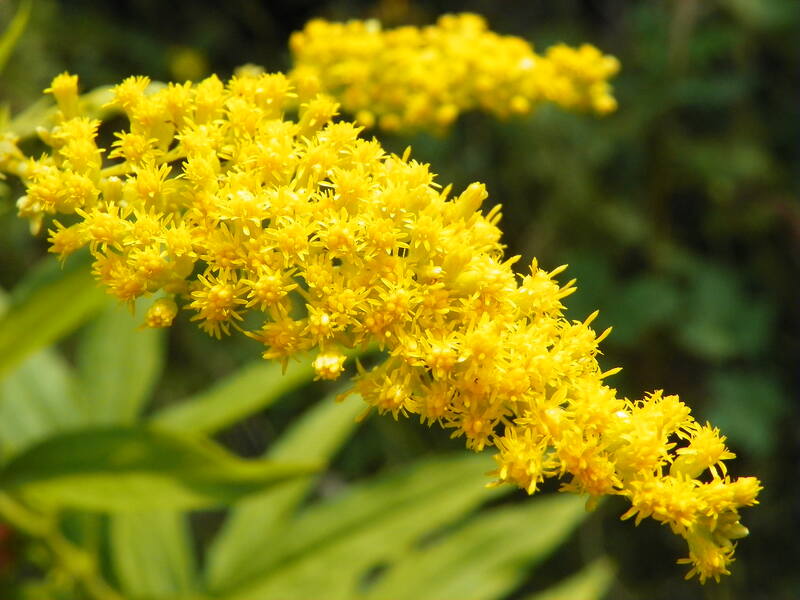
Photo Credit: Peter O’Connor aka anemoneprojectors / Flickr / CC BY-SA 2.0
Canada goldenrod is another great choice. Known for its bright yellow flowers and tall, slender stems, this plant thrives in the eastern part of the state, and can also be found in the central region, near the north part of the Missouri River, where it benefits from the fertile sandy soil. While it might not grow well in Harding, Butte, Meade, or Jackson County, it adapts pretty well to the southwestern and northwestern regions of the Black Hills.
You can plant it in borders or along fences to create a vibrant, eye-catching display. It has a moderate shade tolerance and can grow in areas with dappled sunlight, such as beneath trees or near larger shrubs and bushes that cast shade. Keep in mind though, that Canada goldenrod can be prone to fungal diseases, such as powdery mildew, particularly when grown in areas with high humidity or poor air circulation.
Plant type: Herb
USDA Hardiness zones: 3 to 9
Sun: Full sun to partial shade
Soil: Dry and moist soils; sandy, loam, and clay.
Duration: Perennial
Fragrance: Mild
Bloom Time: August – November
Water needs: Medium
Mature height: Up to 6 feet
Maintenance: Low to Medium.
6. Nannyberry (Viburnum lentago)
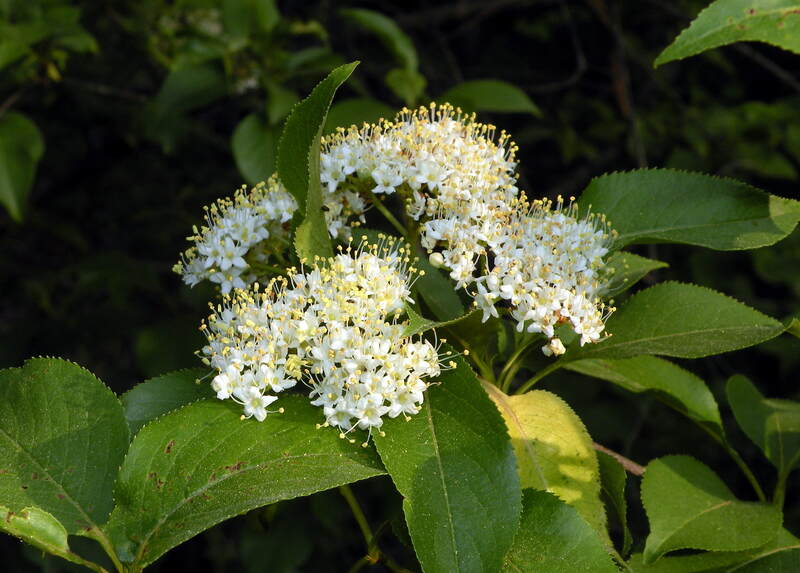
Photo Credit: Doug McGrady / Flickr / CC BY 2.0
Nannyberry is a multi-stemmed shrub that can grow up to 20 feet tall and wide, making it an excellent choice for creating natural privacy screens or borders. In the spring, it produces clusters of fragrant, creamy-white flowers that attract pollinators, such as bees and butterflies.
It thrives in various regions of South Dakota, with a particular affinity for the eastern part of the state, in countries like Marshall, Roberts, Brookings, and Union. It can also grow well in the Black Hills (Harding, Pennington, and Lawrence), where the cooler temperatures and higher elevations provide a suitable environment.
Plant type: Shrub or small tree
USDA Hardiness zones: 2 to 8
Sun: Full sun to full shade
Soil: Clay, loam, sand, moist, well-drained soil
Duration: Perennial
Fragrance: N/A
Bloom time: April – June
Water needs: Medium
Mature height: 10 – 20 feet
Maintenance: Low
7. Swamp Milkweed (Asclepias incarnate)
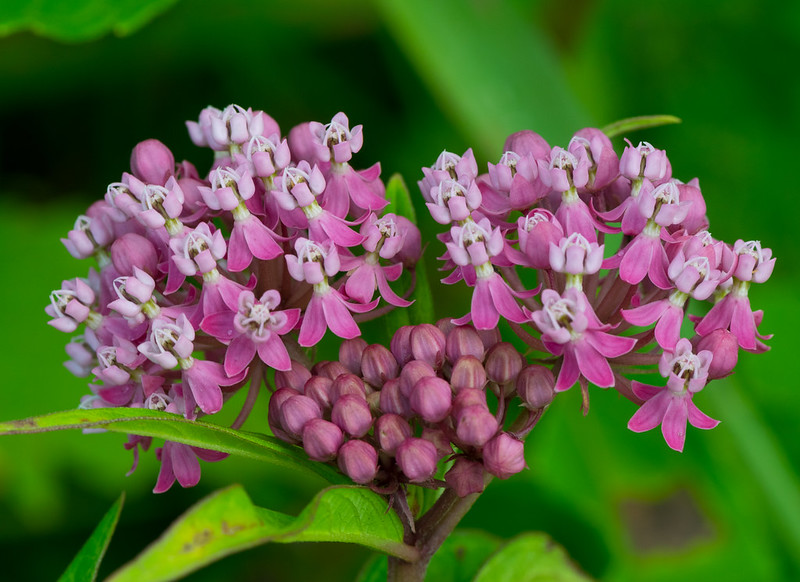
Photo Credit: Joshua Mayer / Flickr / CC BY-SA 2.0
Swamp milkweed is a tall herb perennial that can reach heights of 4 to 6 feet, making it an eye-catching addition to any garden. Its showy clusters of pink flowers bloom from mid-summer to early fall, and provide the essential food source for Monarch butterfly caterpillars. While it’s low maintenance, you’ll need to regularly deadhead the spent flowers to prevent self-seeding, and keep an eye on the plant’s growth to ensure it doesn’t encroach on neighboring plants.
It grows best in the southwestern counties of South Dakota, such as Fall River, Bennett, and Tripp, where the soil is moist and fertile. It’s also well-suited to eastern areas near rivers, such as Brule, and other regions in the east part of the state (for example, Clark, Roberts, and McCook counties).
Plant type: Herb
USDA Hardiness Zone: 3 to 9
Sun: Full sun to partial shade
Soil: Organically rich, slightly acidic, well-drained soil
Duration: Perennial
Fragrance: Sweet smelling
Bloom time: Midsummer to fall
Water needs: High
Mature height: 4 to 6 feet
Potential hazards: Poisonous to humans, pets, and other animals if ingested.
Maintenance: Low
8. Black-Eyed Susan (Rudbeckia hirta)
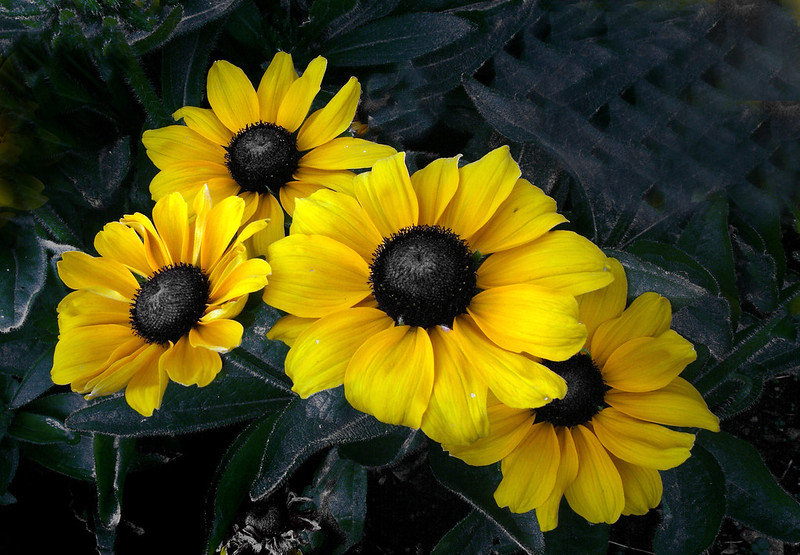
Photo Credit: Bernard Spragg. NZ / Flickr / CC0 1.0
Black-eyed Susan is a versatile plant that can grow well in various regions of South Dakota, particularly in the southwestern and northeastern edges of the state. It’s drought-tolerant and can even thrive in the more arid regions of Mount Rushmore State. However, it may not perform as well in areas with consistently wet or poorly-draining soil.
This plant thrives in full sun but can tolerate partial shade, and it’s also quite cold-hardy, which means it can survive South Dakota’s harsh winters without a problem. Now, black-eyed Susan is a short-lived species, meaning individual plants may only last for a few years. However, the plant’s self-seeding nature typically ensures a continuous presence in your garden.
Plant type: Flower
USDA Hardiness Zone: 3 to 9
Sun: Full sun. Can tolerate some partial shade
Soil: Dry, moist, well drained soils.
Duration: Annual , Perennial, or Biennial depending on growing conditions
Fragrance: Sweet
Bloom time: Early summer to early fall (Jun – Sept)
Water needs: Medium
Mature height: 1 to 3 feet
Maintenance: Low. During its first season, it should be irrigated with only one inch of water per week – once established, it’ll be drought-resistant.
How to Choose Native Plants for Your South Dakota Yard
Before selecting native plants for your lawn, it’s essential to keep in mind a few things:
First, think about your lawn. How much sunlight exposure does it have? What’s the predominant soil type? Some native plants will thrive in shaded yards, but others, like the black-eyed Susan, need full sun exposure.
Similarly, certain plants are well-adapted to dry, sandy soils, while others require moist or well-draining soils. Knowing your yard’s quirks will help you pick native plants that’ll feel right at home.
Next, consider your location within South Dakota and its corresponding USDA hardiness zone. South Dakota spans zones 3 to 5, with colder temperatures in the northern regions and warmer conditions in the southern areas. Select native species that are well-suited to your zone to ensure they can withstand the local climate and temperature extremes.
Maintenance requirements are another crucial factor to consider. You need to choose plants that match your gardening style and commitment level, so you don’t end up in over your head.
Finally, while we’ve covered some of the best native plants for South Dakota here, there are many other options to also check out. For example:
- Lindley’s aster (Aster ciliolatus)
- Black Walnut (Juglans nigra)
- Rough Blazing Star (Liatris aspera)
- Common Evening primrose (Oenothera biennis)
- Wild Bergamot (Monarda fistulosa)
- Harebell (Campanula rotundifolia)
FAQ About Native South Dakota Plants
Sioux Falls is home to a wide variety of native plant species. Some popular options include:
● Red Columbine (Aquilegia canadensis)
● Swamp Verbena (Verbena hastata)
● Nannyberry (Viburnum lentago)
You’ll find a range of native wildflowers, shrubs, and trees in the Rapid City area. For example:
● Fireweed (Chamerion angustifolium)
● Tall Thimbleweed (Anemone virginiana)
● Common Yarrow (Achillea millefolium)
Northeastern South Dakota is home to a variety of native plants that have adapted to the region’s climate and soil conditions. Some of the plants you’ll find in this area include:
● Black-Eyed Susan (Rudbeckia hirta)
● Narrowleaf Purple Coneflower (Echinacea angustifolia)
● Big Bluestem (Andropogon gerardii)
Where to Find Native Plants in South Dakota
Local nurseries are an invaluable resource for finding native plants that are well-suited to your garden’s specific needs. They can provide expert advice on which plants will thrive in your area and offer a wide selection of native species to choose from.
Incorporating native plants into your garden can truly transform your outdoor space, creating a beautiful and sustainable landscape that reflects the unique character of Mount Rushmore State. However, to keep your garden looking its best, it’s essential to maintain it properly —and that means pruning, edging, and mowing among many other things.
If you want to keep your yard healthy and vibrant without the stress of constant upkeep, hire a lawn care expert near you today.
Main Image Credit: Pxhere

